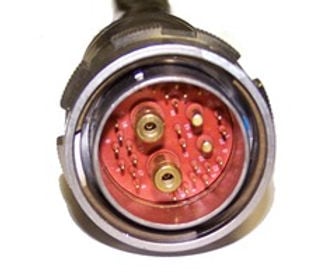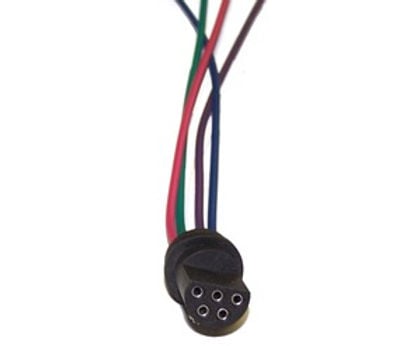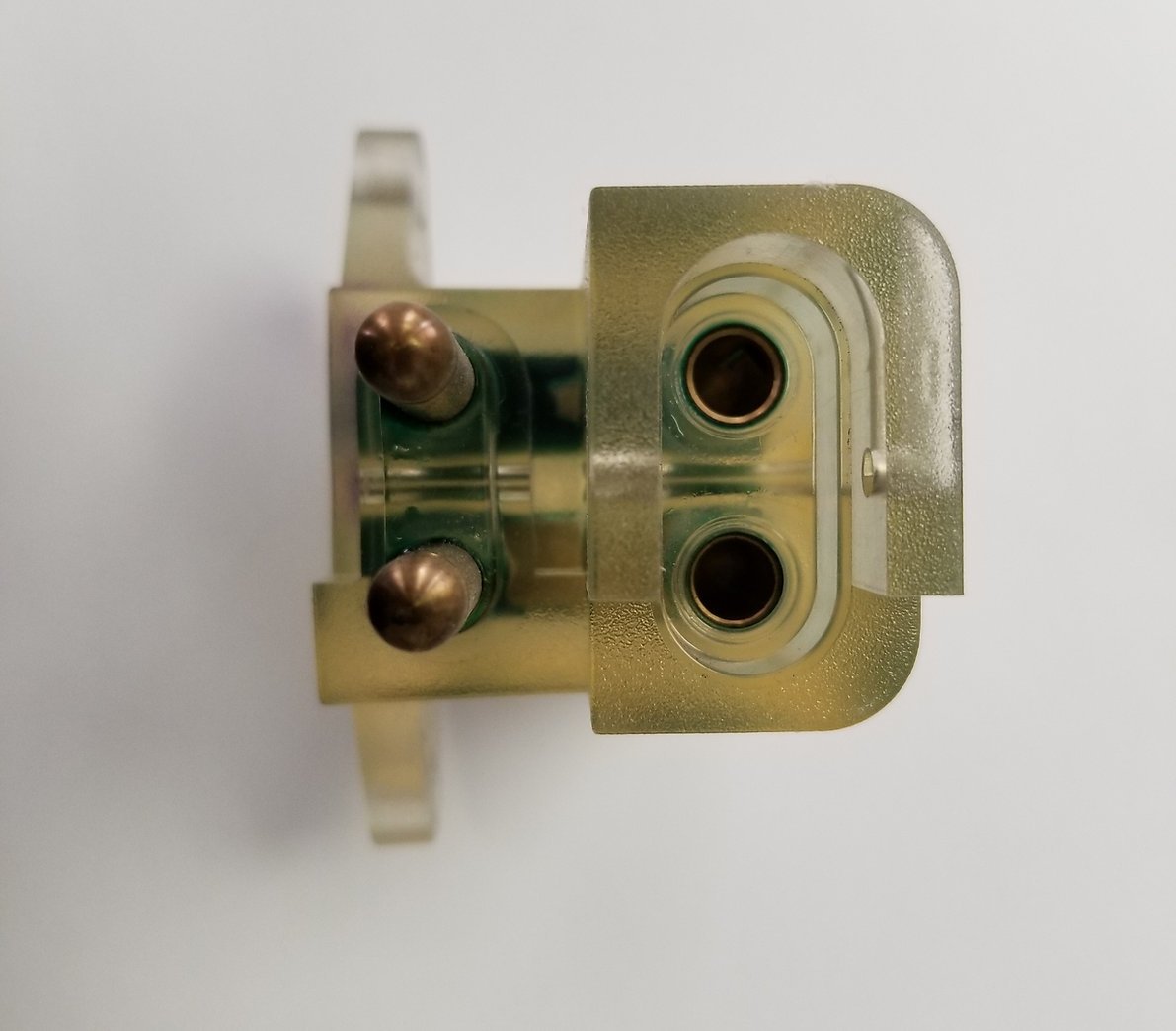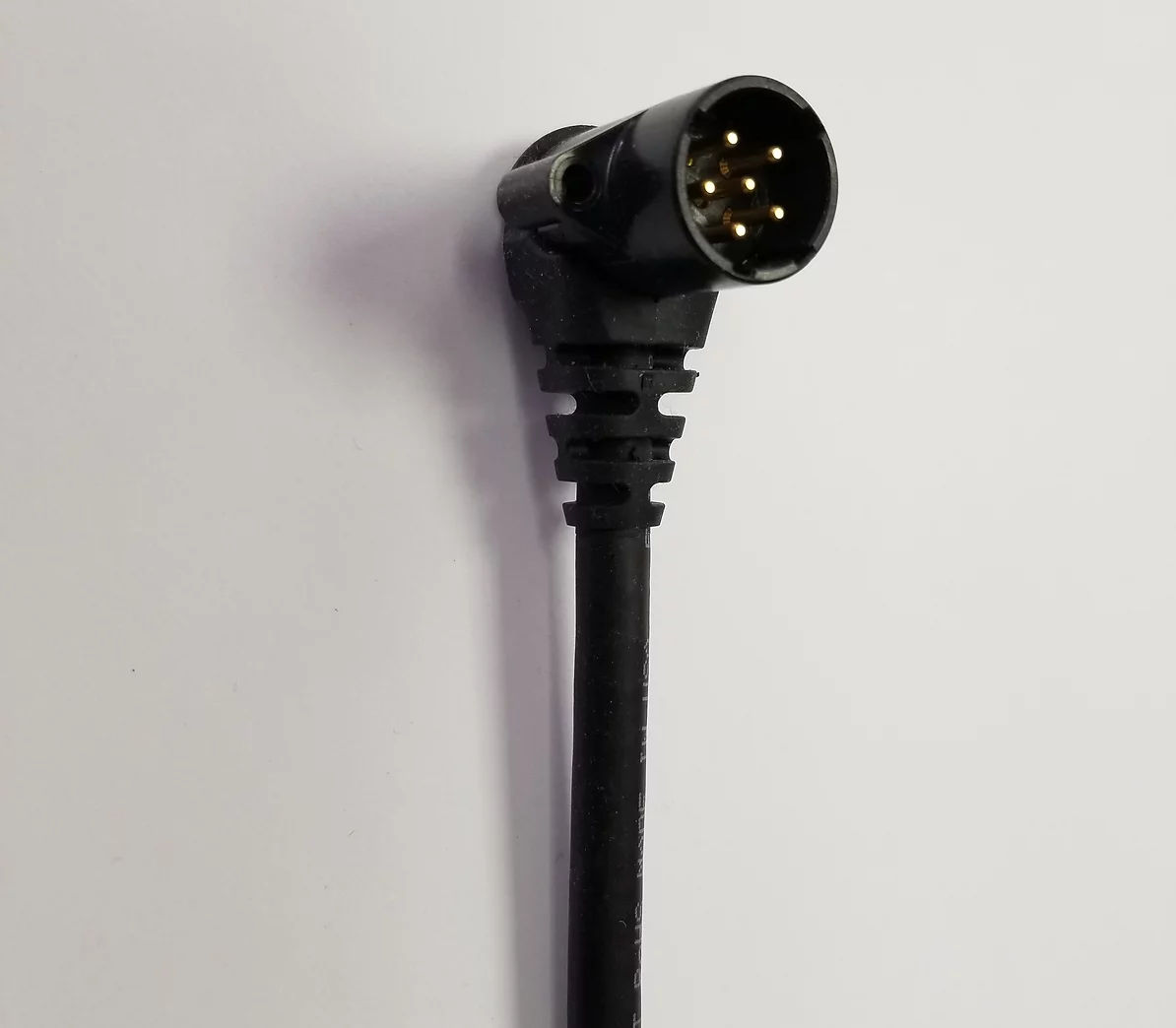The injection molding process is a key factor in cable overmolding as it allows the machinery to accurately control the critical tolerances to the external temperature and pressure. Continuously controlled hot melt thermoplastic is used for overmolding to provide a consistent design and to maintain the right balance between rigidity and flexing of the cable and the cable housing.
During the manufacturing process, the material is molded over the cable/wires while the cable is being inserted into an insulated or non-insulated raceway or connector.

Insert molding of thermoplastic heat-stabilized materials is less expensive compared to other methods and allows facile side in and out movements of different cables. Moreover, it helps in uniting various cables and components as well as providing lift and reliability to the end of the cables. This is a big advantage, as the alternative used to be a bunch of single cables, which didn't help improve the strength of the cables.
Learn more about insert molding vs. overmolding, or learn about Aberdeen's insert molding services.
Cable Overmolding Materials:
Aberdeen offers over-molded cables fashioned from a wide range of thermoplastic materials. Our overmolded cables come in different colors and shapes, which are essentially the same as any other traditional cable. Moreover, the strength of these cables is far superior to the strength offered by common cables. Some of the materials we offer include:
-
PVC - Polyvinyl chloride or PVC can be considered to be possibly the most acceptable and widely used thermoplastic that is used for overmolding. It is, however, an amorphous thermoplastic and considered controversial material. PVC possesses a soft, rubber-like feel along with excellent flexibility.
-
TPU - Thermoplastic polyurethane is an excellent alternative to PVC. It is much softer in texture as compared to PVC and offered in a wider range of colors. TPU is considered to be more pliable than PVC and has a higher heat tolerance, thus much more stable to the temperature changes.
6 Important Benefits of Cable Overmolding:
Cable overmolding is a specialized process and a key factor in the production of high-performance cables. Getting the right balance between the tightness of the cables and flexibility offered by the housing is an invaluable feature in ensuring the safety, reliability, and efficiency of the cable and its end-use. Taking into consideration the following six benefits of cable overmolding, it's easy to understand why this method is gaining widespread popularity so quickly.

Tamper-Proof Cable:
The first and the foremost important benefit of cable overmolding is that it provides absolute security and protection to the cables from being tampered or interfered with by anyone, thereby ensuring the safe use of the cable.
An extra layer of insulation provides better protection to the cables that make them less vulnerable to tampering than the standard cables. This extra layer can be either PVC or metal threads enclosed in plastic and embedded in the cable for further protection, making it even harder for unauthorized personnel to interfere or cut the cables.
In industries where cables are repeatedly needed to be moved from one point to another, protection from tampering or interference is an absolute necessity. Therefore, the first key benefit of cable overmolding is that it helps in safeguarding the cable and the attached components from tampering.
Tamper-Proof Cable:
Cable overmolding is an advanced solution for ensuring the reliability, safety, and efficiency of any cable and its end-use. Unlike traditional single-core cables, cable ends are securely fastened, and the core of the cable is surrounded by a cable housing – an entire unit of the cable is insulated with more than one layer of material. This method adds a tough, durable exterior to the wires while improving the efficiency and durability of the cable significantly.
The advanced overmolding ensures that the cables are protected from general wear and tear. The tough housing of the overmolded cable ensures that the externally exposed components are protected from any kind of damage. Although some of the damages can't be prevented, the over-molded cable is designed to stay intact and functional even with major external damage.
Improved Cable Assembly Processes:
Overmolding makes the assembling process easier with the heat stabilization properties of the plastic, wherein the plastic can withstand high temperatures without suffering deformation in any form. The cable manufacturer now doesn't have to worry about the lack of pliability and can easily be installed in the cables and connector.
Moreover, the process of overmolding enables the efficient and secure joining of the cables makes it a simple way to assemble and join several cables that can be firmly attached with the connectors by using cord or wire crimps. Hence, overmolding helps in eliminating any jig or fixture that would otherwise be required to ensure that the cable did not move when it is being assembled.

Shock and Vibration:
The cable overmolding prevents any external force or impact from affecting the cable or its components, which makes it most suitable for the industrial environment. With the robust cable housing and stable connections, the over-molded cable even withstanding continuous vibrations and impacts over a period of time.
At the tip of the cable, the over-molded cable too is strong and sturdy enough to protect the tips of the cable connectors and the surrounding cables from wear and tear or impact, which can adversely affect the cable strength. This makes it suitable for use in any environment.
Flex and Strain Relief:
The outer covering of the cable helps in the extraction and the retraction of the cable, with a thick and easy to handle casing. The flexibility of the over-molded cable enables the cable to bend back and forth within certain limits without affecting the cable's life and its functionality.
The outer casing acts as a buffer between the inner wires of the cable and the external elements. The buffer protects the inner wires from the damage caused by the external impact and pressure over a long period of time.
Cable Management:
Cable management is arguably the most important and basic factor in any industrial setup. With an increased number of cables, cable management might seem to be a tough task ahead. The overmolded cables make it possible for the cables to be neatly arranged and managed. The solid-colored outer covering of the cable helps in cable management by organizing all the wires in a systematic manner. Thus, it makes the system less chaotic and helps in simplifying the task of maintaining simplicity.



